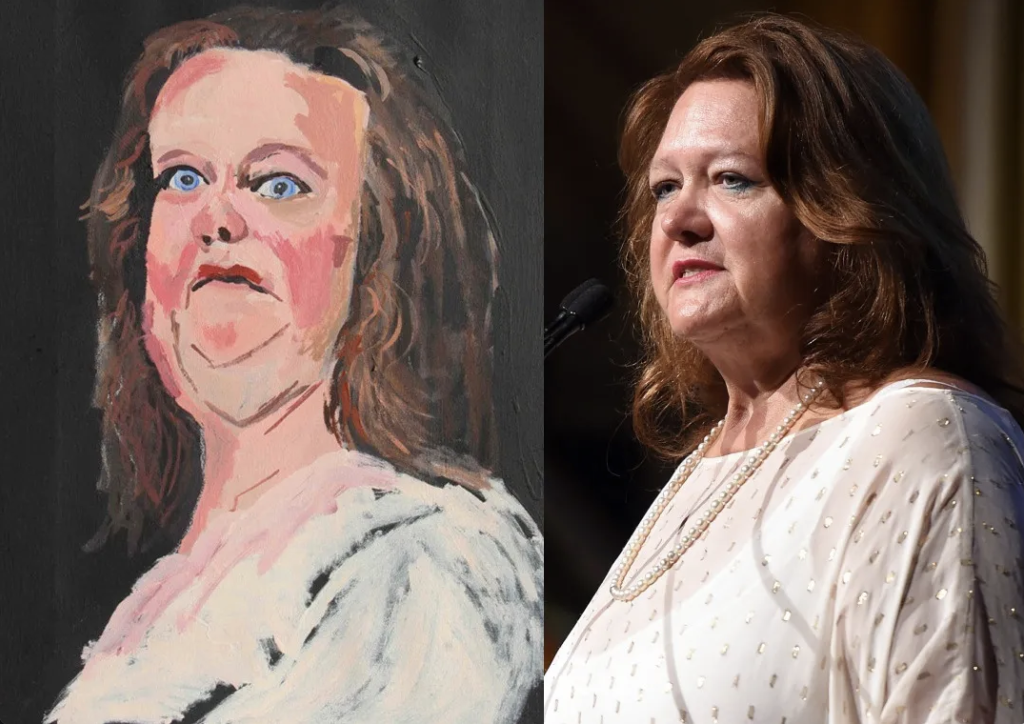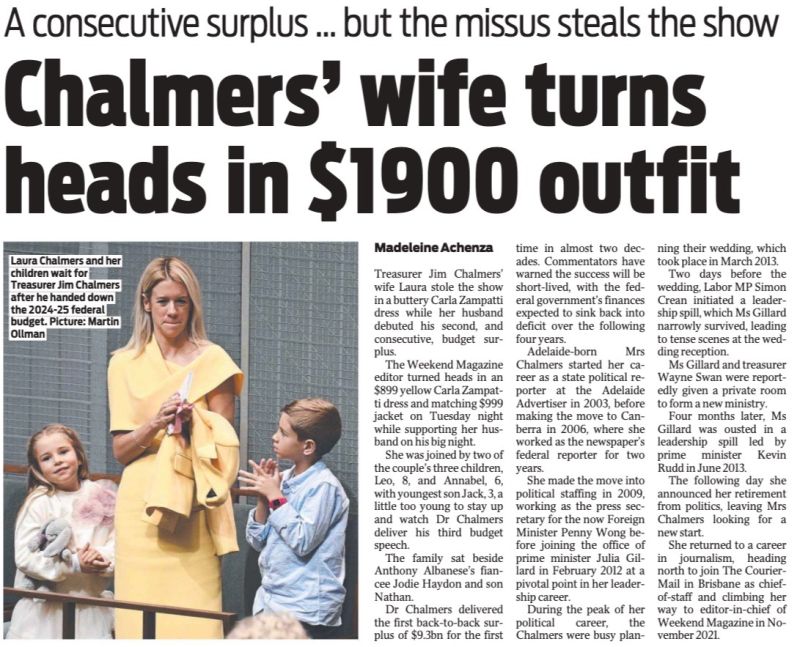This week was all about the power of portrayal, with two well-known Australian women, Gina Rinehart and Laura Chalmers both proving in different ways how a picture is worth a thousand words of editorial.
Let’s start with Australia’s richest woman Gina Rinehart, who is no stranger to public attention.
This week she found herself at the center of a spotlight of her own making after she demanded that the National Gallery of Australia remove an unflattering portrait of herself by Archibald Prize-winning Indigenous artist Vincent Namatjira. Vincent is known for his unique depictions of powerful figures, with other portraits in his collection including Queen Elizabeth, former Prime Minister Scott Morrison, and former Prime Minister Julia Gillard.

Gina’s attempts to have the artwork removed, including contacting the gallery multiple times through her associates, have only drawn more attention to the artwork. If Reinhart had acknowledged the artwork’s perspective and moved on, it likely wouldn’t have gained this level of attention. Instead, her high-profile reaction has made it a significant news story, overshadowing her original intentions.
Instead of quietly addressing the issue, Gina’s actions have turned a relatively obscure piece into a media sensation. As we see so often, trying to suppress something can backfire, leading to greater public interest and debate. This artwork, now front and centre on the gallery’s homepage, has sparked discussions about Reinhart’s history with indigenous communities and her influence over public narratives.
This isn’t her first attempt to censor unflattering portrayals. She also made several attempts to stop the publication of a critical biography by Adele Ferguson, none of which succeeded. And because her energy is going into her portrayal, instead of investing in her reputation, her efforts create the opposite effect.
Gina would do well to look up the Streisand effect, which is the unintended consequence of attempts to censor information, where the effort to do so increases public awareness of the information.
Remember when the Bureau of Meteorology tried to order the media to stop calling it ‘the BOM’ and instead call it ‘the Bureau? Yet again, instead of solving a problem, the attempt to ‘fix’ the optics resulted in a whole new, far worse reputational issue.
Moving on to another example of optics at play, let’s take a look at the reaction to Laura Chalmers’ outfit on budget night. Traditionally, the Treasurer’s family is photographed watching the budget speech, making their appearance a point of public interest. Laura’s yellow Carla Zampatti dress and jacket were singled out in the media as costing $1900, which in our current economic climate, sparked discussions about whether this was appropriate.

Should we pick apart what a woman is wearing and make that connection as though it mattered at all to policy, or to our lives? No. The fact is, though, it still happens. If you wear a ball gown to a disaster recovery site, it’s going to distract from your good intentions and become a story on its own.
Women in the public eye frequently face critiques of their appearance, a scrutiny that men rarely experience to the same extent. This can be seen as both a challenge and an opportunity. For example, Brittany Higgins’ choice to wear suffragette white made a powerful statement during her public appearances, shifting the narrative to more significant issues.
These examples all reveal how optics can overshadow substance, but also give us clues on how they can be harnessed to highlight important messages. The key takeaway here is the importance of context and intentionality with public appearances and messages. Whether it’s a controversial piece of art or a carefully chosen outfit, the way these elements are managed and perceived can significantly impact public discourse.
Focus on what you can control. Ultimately, the important thing isn’t what you look like, but what you’re contributing and putting into the world.
Instead of passing the popcorn, let’s look at substance instead.
For your weekly dose of though-starting ideas, sign up for Pure’s email newsletter here.

